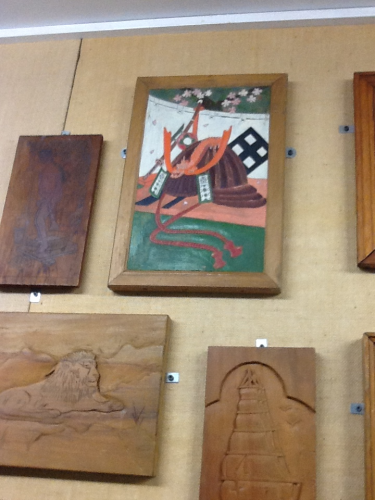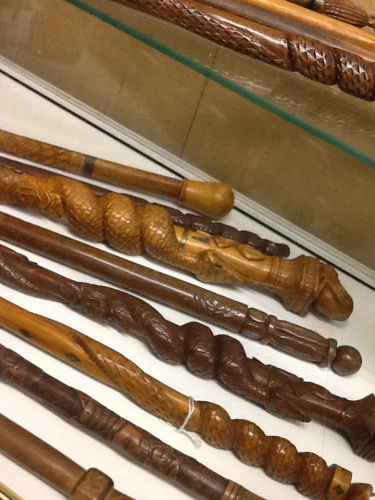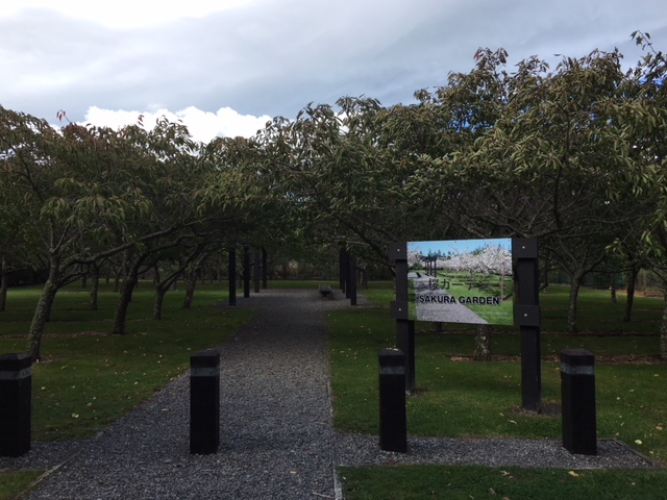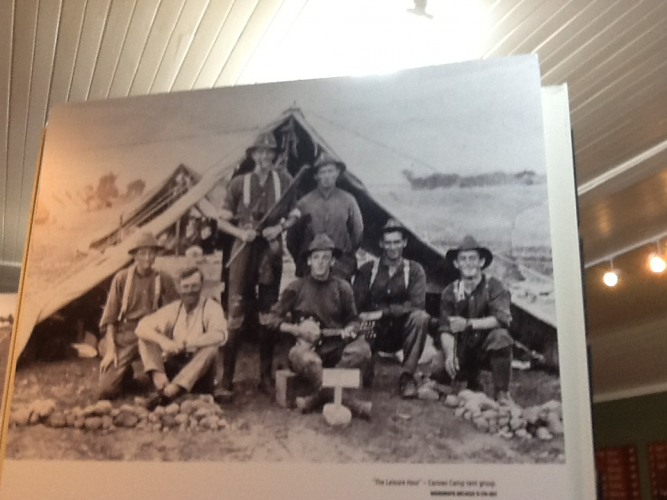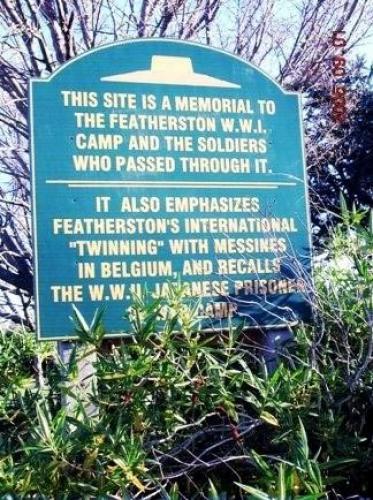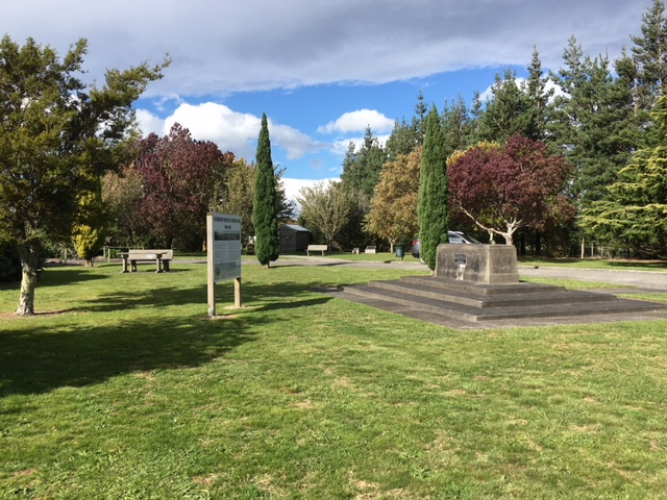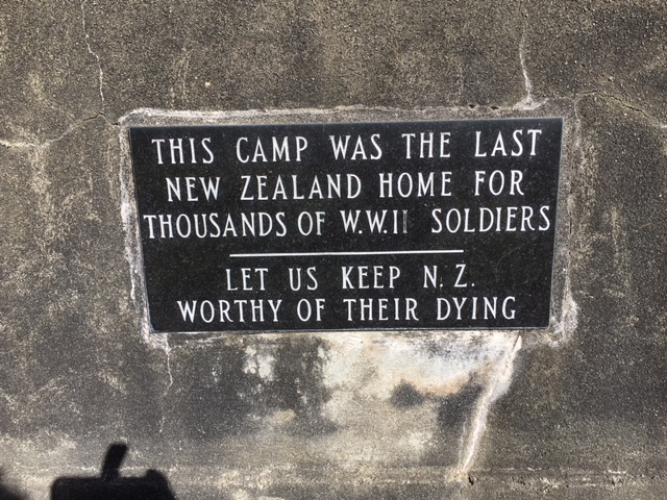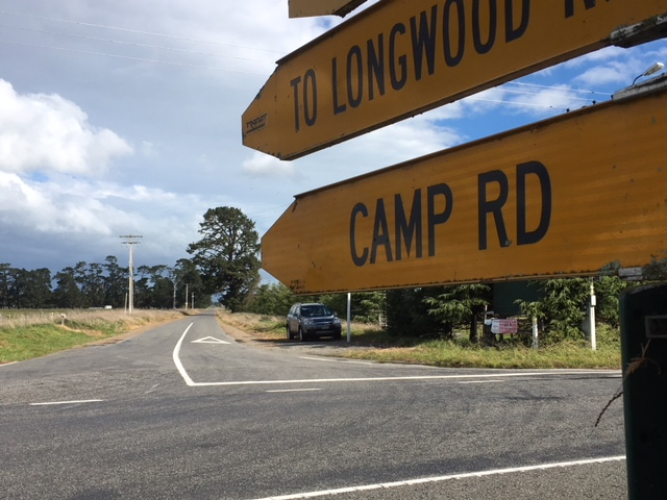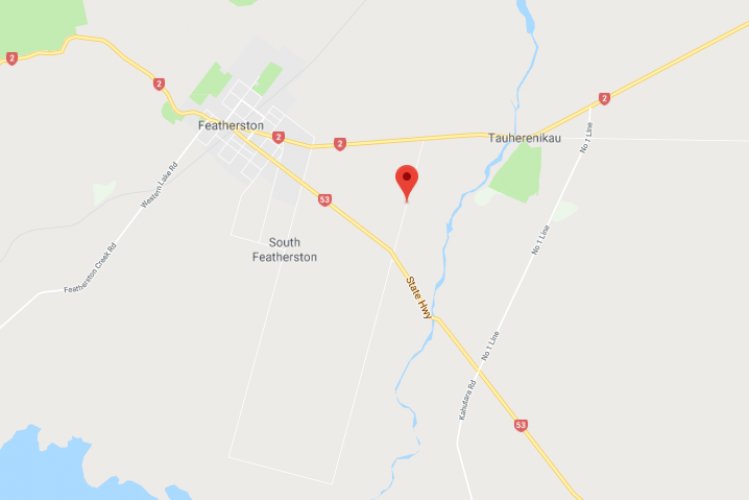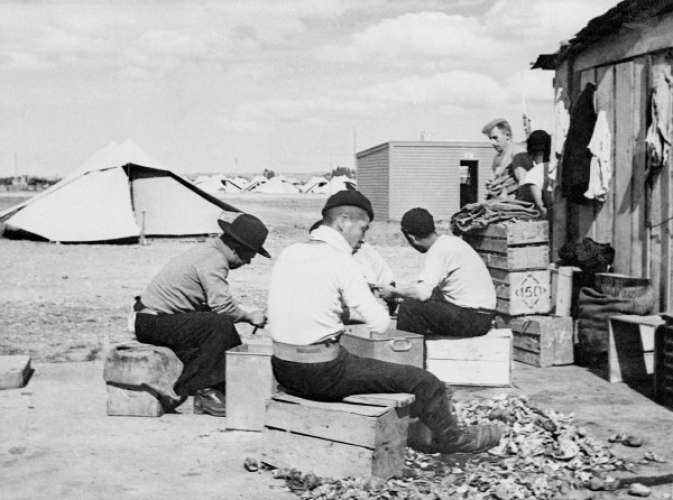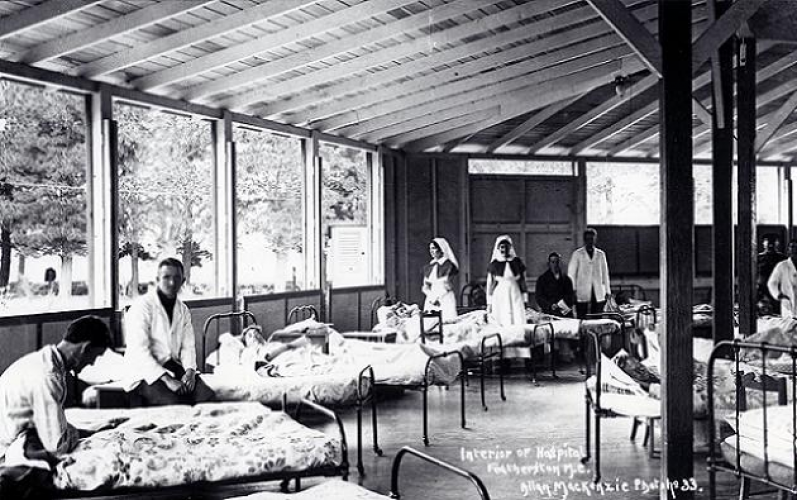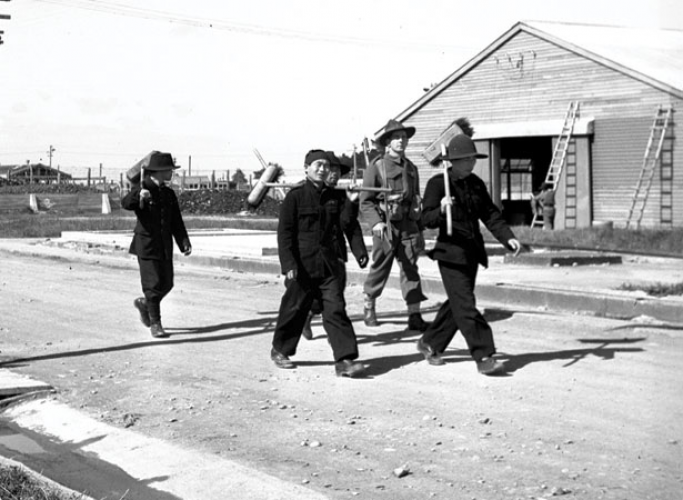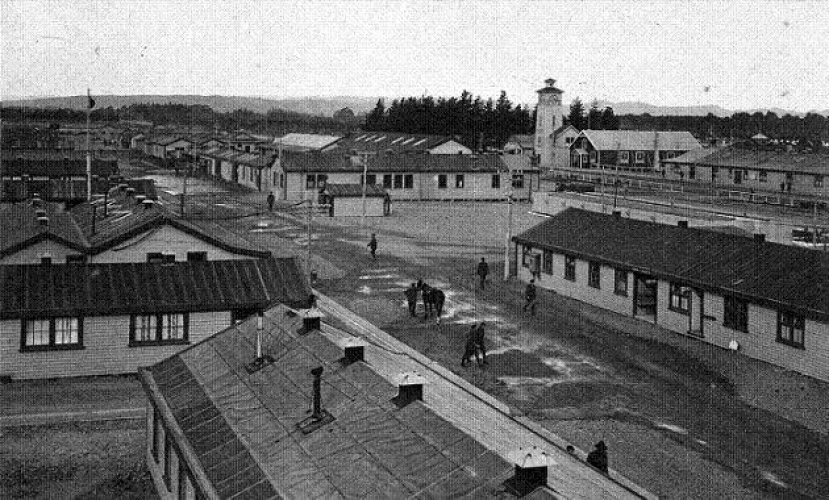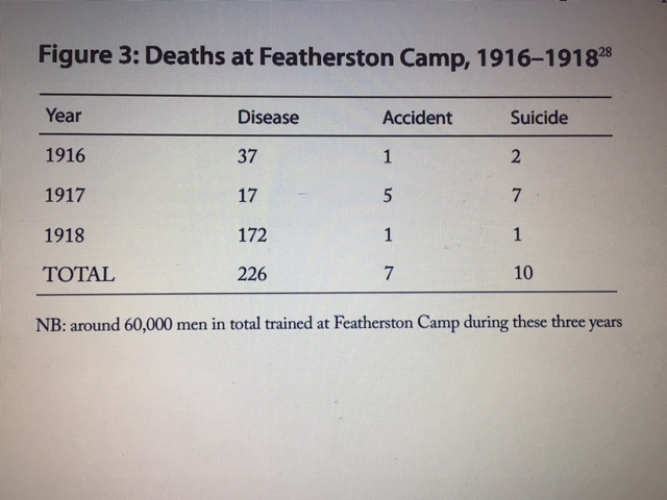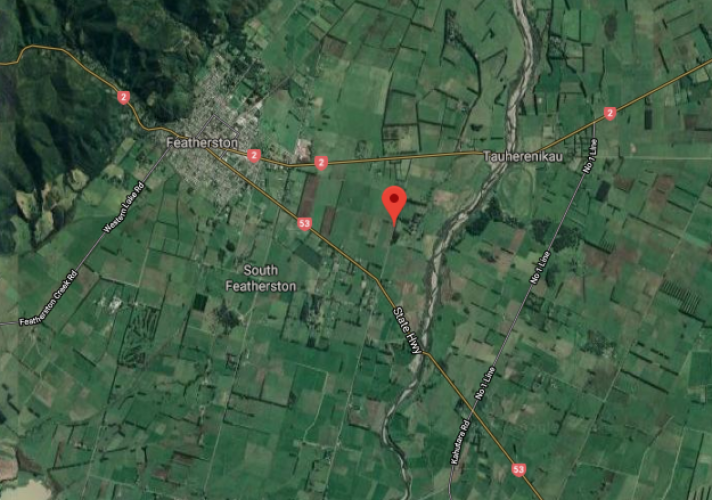108 Camp Rd Featherston, near Tauherenikau 2018
Reason for the name
The reason for the name being Camp Road is because the road ran through the Military Camp separating the Hospital, Institutes and shops from the Canvas Camp. The Military Camp and the Prisoner of War Camp, on the same site, have had a significant impact on the history of Featherston.
In 1917, on maps of the Military Camp, the road was known as Featherston South Road but by 1935 the name had changed to Camp Road, as shown on a plan of the Featherston-Longwood Water Race There has been a lot of work done by the Records and Archives officer at the South Wairarapa District Council and Land Information New Zealand, but no one has found the exact date that the name changed.
The reason for the name being Camp Road is because the road ran through the Military Camp separating the Hospital, Institutes and shops from the Canvas Camp. The Military Camp and the Prisoner of War Camp, on the same site, have had a significant impact on the history of Featherston.
Authors: Featherston Military Camp: Greta Matthews and Summer Culkin
Featherston Prisoner of War Camp: Katie Walker and Sienna Rozing
Thanks to Lesley, Elsa and Joanne from the Featherston Heritage Museum, Susan Mitchell Records and Archives Officer; South Wairarapa District Council; The Addressing Team,IPS & Addressing,Location Information, Land Information New Zealand
PART ONE: FEATHERSTON MILITARY CAMP 1916-1918
The Featherston Military Camp was opened in January 1916 on the main road between Featherston and Tauherenikau. When World War One began it was hoped that the fighting would not last long but by the end of 1915 it was clear that the fighting was going to continue, and more trained soldiers would be needed. Trentham Camp had become overcrowded so a new site was chosen near Featherston.
The Featherston Military camp was the biggest camp in all of New Zealand. There were over 4000 men at the camp at 1915 but by 1927 the number had tripled and they had over 1400 soldiers at the camp. The campsites and training grounds covered 1,861 acres of land in the Featherston-Greytown area. Land was leased from local land owners.
The camp was designed and built between August 1915 and January 1916 by 1000 men. There were several smaller camps attached to the main camp, Papawai camp near Greytown was a training camp for shooting, and near the Tauherenikau river was the firing range. One side of the camp was wooden buildings and the other side was known as Canvas Camp, where the soldiers slept in tents to harden them up before they left for overseas.
TRAINING
The training period at Featherston was from two to four months. They learned to march, dig trenches, fire rifles, machine guns and artillery cannon. Featherston Camp provided stables for 500 horses as well as a riding school and training grounds for mounted men. They learned to manage horses, obey orders quickly and to live together in large groups in difficult conditions.
CAMP LIFE
Soldiers were allowed out of camp and they spent time at the Anzac Club, a place that had been built for them in Featherston by the local people. It was a place where they were offered reading and writing rooms a concert hall billiard tables, a home away from camp.
The soldiers ate healthy foods, There was 1818 litres of milk brought in every day, 3175 kg of bread and 4082 kg of meat. They had their own bakery at the camp and there were 8 dining rooms that could hold 1500 men each.
The soldiers needed to be healthy to train and fight. There was a hospital at the Camp, as well as dental and other health services. The hospital was very busy with everything from illness, to injury and even suicide. In 1918 the influenza pandemic, which claimed thousands of lives in New Zealand killed 172 at the Camp, soldiers and medical staff. There is a special section at the Featherston Soldier’s Cemetery for these people.
After the war, the large camp was no longer needed. The land was given back and buildings were relocated and occasionally can still be seen around Wairarapa. Part of the Soldier’s Club became the Kahutara Hall.
PART TWO: JAPANESE PRISONER OF WAR CAMP 1942
In 1942 to 1943 the New Zealand Government brought in 868 prisoners of war from Guadalcanal who had been caught by the United States Marines.
During the Second World War in September 1942, a camp was built for the Japanese army prisoners of war, at the request of the United States. The camp was built in a small town called Featherston, near Wellington, on the site of the Featherston Military Camp. After sitting empty for 29 years the site was a wilderness with only old concrete and wooden buildings remaining. The first job was to clear the site, then latrines were dug, tents put up and prepared as sleeping quarters, dining rooms, hospitals, store-houses, offices, isolation quarters or places of detention. By 1943 the camp was filled with about 800 Japanese soldiers. The first people captured were mostly civilians who had been forced into the Japanese Navy. They were in bad physical shape and had to be issued with more clothing to help them survive the harsher New Zealand climate.
Six hundred of the 803 prisoners were employed in some type of work. Most of the soldiers accepted what they had to do and they were fine with working but some refused to work. At the camp they were set to work weeding, planting, making furniture, constructing railways, roads, airfields and other necessary items. They had to live under canvas, which was living in a tent or a teepee type structure. Living here was definitely a challenge but they did get paid with money and food. Their beds were hard and not very comfy.
In the Japanese soldier’s spare time they found wood from the old railway or other places around the camp and used nails to carve gifts for their families, friends or guards. They also made games to play with the other P.O.Ws. To decorate the gifts or games they painted them. They did not have fresh paint, so they scraped paint off the building and somehow mixed in water to make a somewhat coloured mix, then painted it onto their creations.
The Japanese soldiers believed it was shameful to their culture, to have been caught as a prisoner. They felt they had let their country and their families down and if they went back to their country they would be shamed along with their family. Many of the Japanese keep a bullet in their pocket and committed suicide. The Japanese soldiers also didn’t think that they should have to work so in February 1943, they went on strike.
When they went on strike the Japanese sat down and refused to work, once the New Zealand guards saw this one of the guards, called an Adjutant, put up his gun and threatened to shoot into the crowd. There were guards on buildings and a group of guards about 10 metres away from the Japanese protesters. They did not budge so a warning bullet was shot just above the crowd which did not hit anyone, and then another shot was fired intended to wound. After that the Japanese started to throw stones as they had no guns. This made the Adjutant very angry and he started to open fire into the crowd, which the other guards followed. In only 30 seconds, many bullets were fired into the crowd. One New Zealand guard was killed by a ricochet bullet and 31 Japanese died instantly, with 63 wounded. Seventeen died later giving a total of 58 Japanese and 1 New Zealander killed in only 30 seconds. After this the Japanese POWs that survived went back and continued to work. This was referred to as “The Featherston Incident” and it was keep quiet for a long time.
At the end of World War Two the Japanese went back to their country and were prepared to be shamed by their family, friends, town and country, but instead were greeted with love and joy. The families were just happy to have them back and the Japanese P.O.Ws gave their family and friends gifts of all the things they had made during their time as prisoners.
After the war, some people wanted to do something to remember what had happened at the camp. In the 1970s a group of POWs and people from the Japanese Government came back to Featherston to visit.
In the 1970s a small rest area was created with a sign to tell people of the site of the World War One camp. Money was raised and the area was dedicated by the Greytown RSA to all who had trained at the camp.

